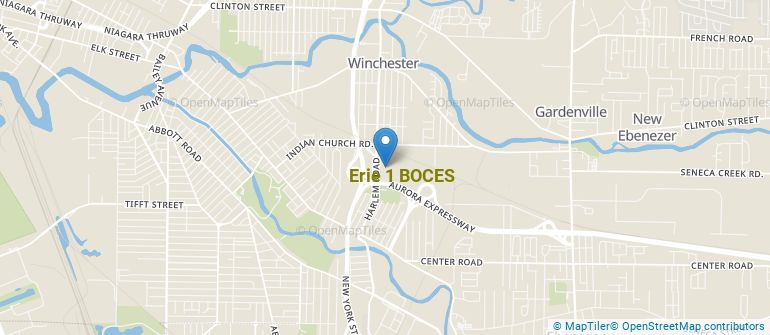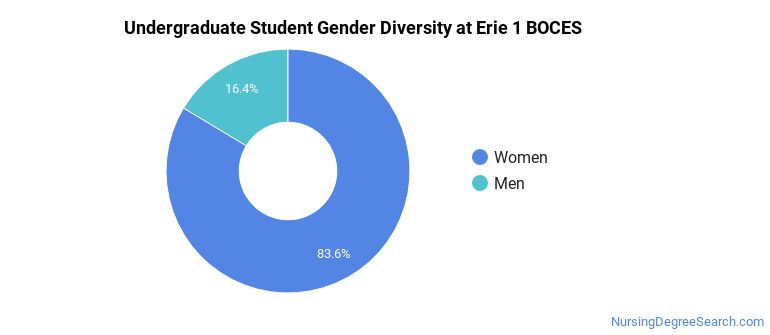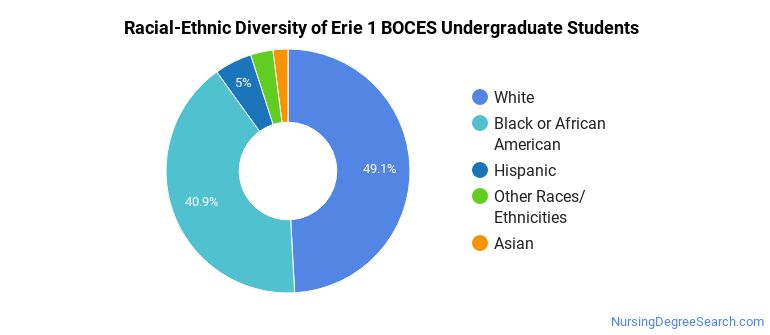Erie 1 BOCES Nursing Programs
Erie 1 BOCES is a public institution located in West Seneca, New York. West Seneca is a good match for students who enjoy the safety and convenience of the suburbs.
Where Is Erie 1 BOCES?

Contact details for Erie 1 BOCES are given below.
| Contact Details | |
|---|---|
| Address: | 355 Harlem Rd, West Seneca, NY 14224 |
| Phone: | 716-821-7500 |
| Website: | e1b.org |
How Do I Get Into Erie 1 BOCES?
You can apply to Erie 1 BOCES online at: https://forms.e1b.org/WFD-Client-Application
Can I Afford Erie 1 BOCES?
Student Loan Debt
While almost two-thirds of students nationwide take out loans to pay for college, the percentage may be quite different for the school you plan on attending. At Erie 1 BOCES, approximately 90% of students took out student loans averaging $5,111 a year. That adds up to $20,444 over four years for those students.
Erie 1 BOCES Undergraduate Student Diversity
Gender Diversity
Of the 403 full-time undergraduates at Erie 1 BOCES, 16% are male and 84% are female.

Racial-Ethnic Diversity
The racial-ethnic breakdown of Erie 1 BOCES students is as follows.

| Race/Ethnicity | Number of Grads |
|---|---|
| Asian | 8 |
| Black or African American | 165 |
| Hispanic or Latino | 20 |
| White | 198 |
| International Students | 0 |
| Other Races/Ethnicities | 12 |
Erie 1 BOCES Nursing Concentrations
The table below shows the number of awards for each concentration.
| Major | Basic Certificate | Undergraduate Certificate | TOTAL |
|---|---|---|---|
| Licensed Practical/Vocational Nurse Training | 0 | 121 | 121 |
| Nursing Assistant/Aide and Patient Care Assistant/Aide | 20 | 0 | 20 |
| TOTAL | 20 | 121 | 141 |
References
*The racial-ethnic minorities count is calculated by taking the total number of students and subtracting white students, international students, and students whose race/ethnicity was unknown. This number is then divided by the total number of students at the school to obtain the racial-ethnic minorities percentage.
More about our data sources and methodologies.
